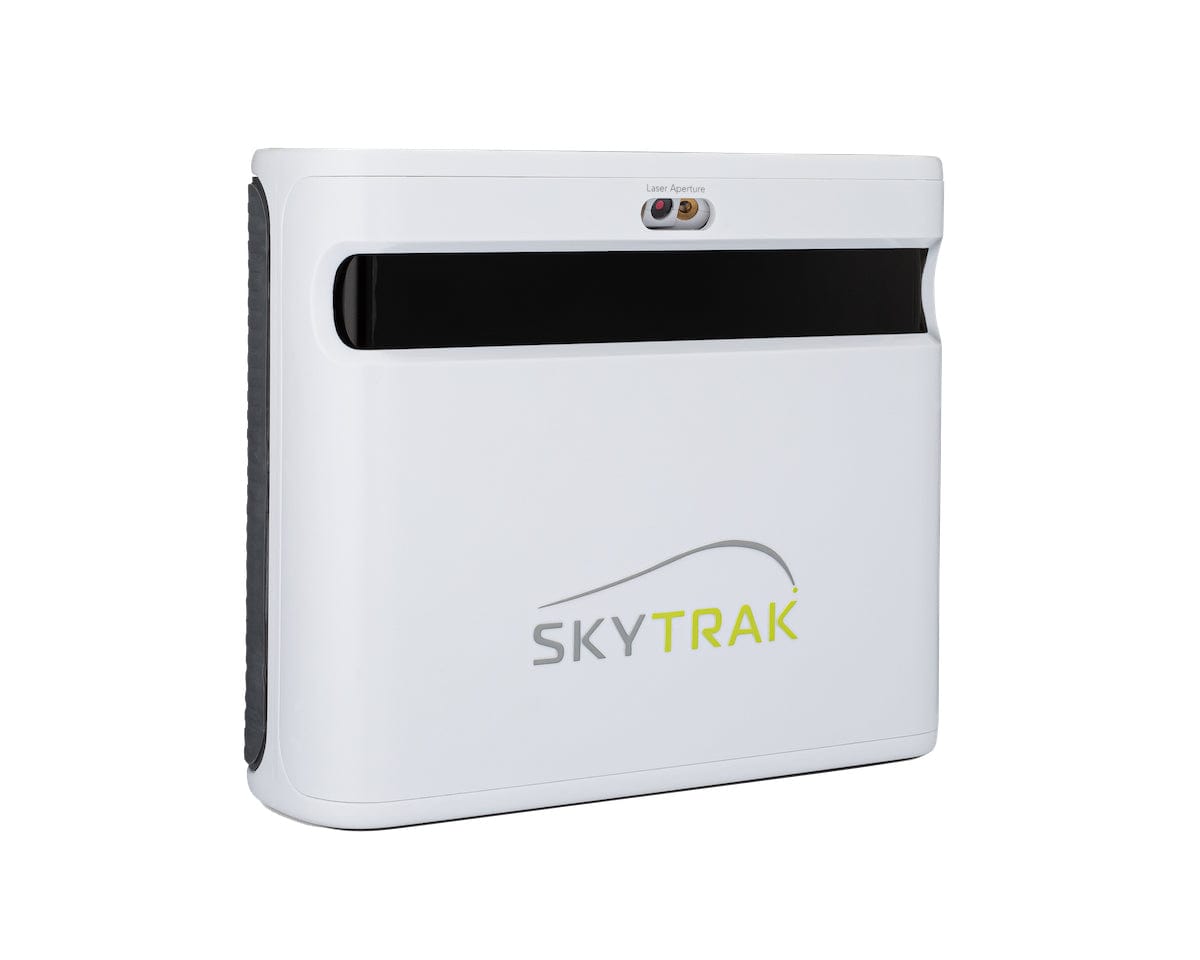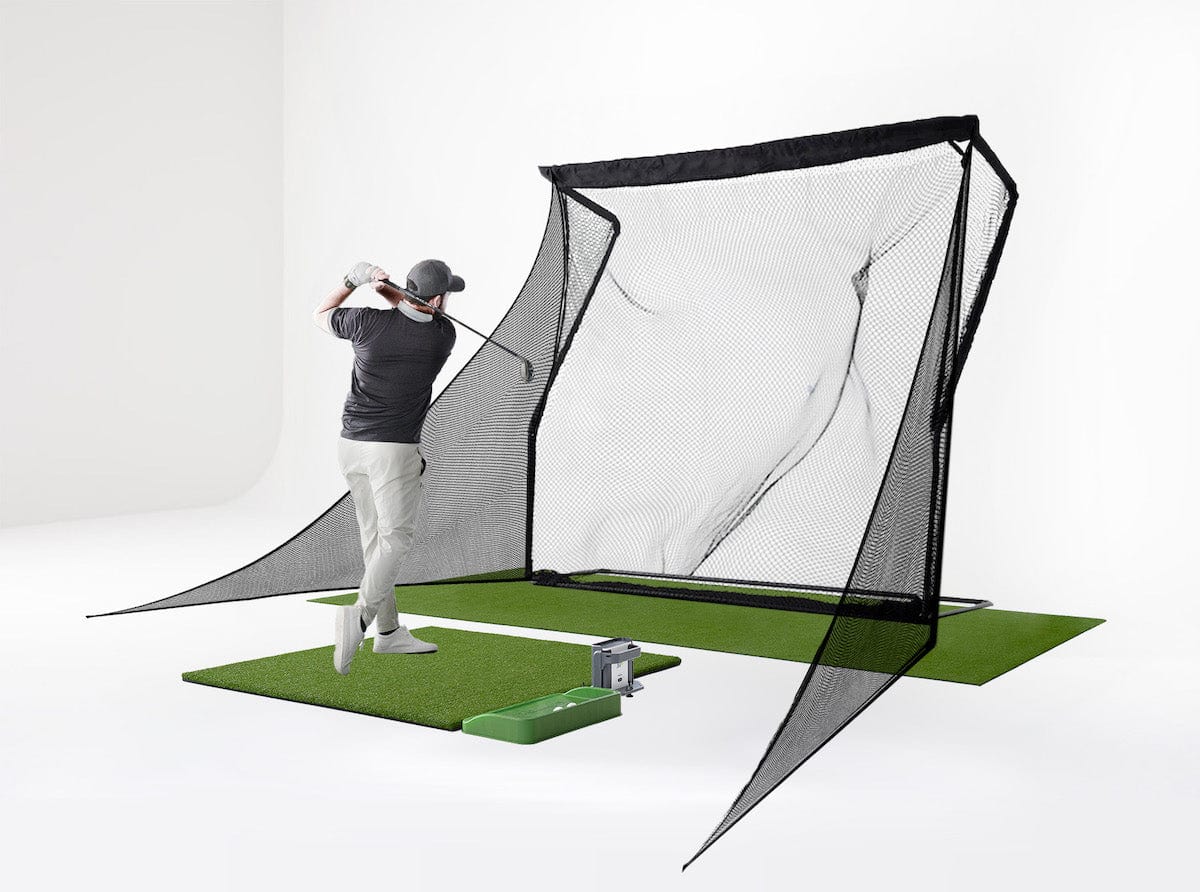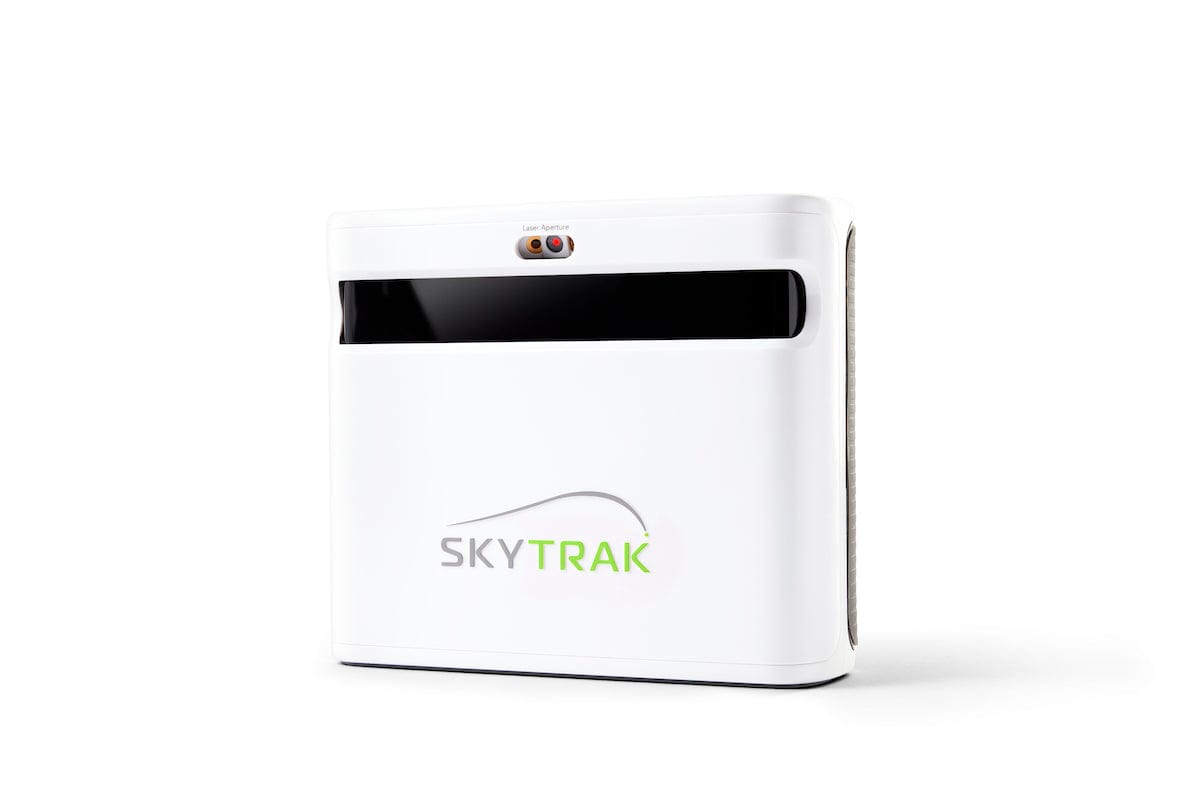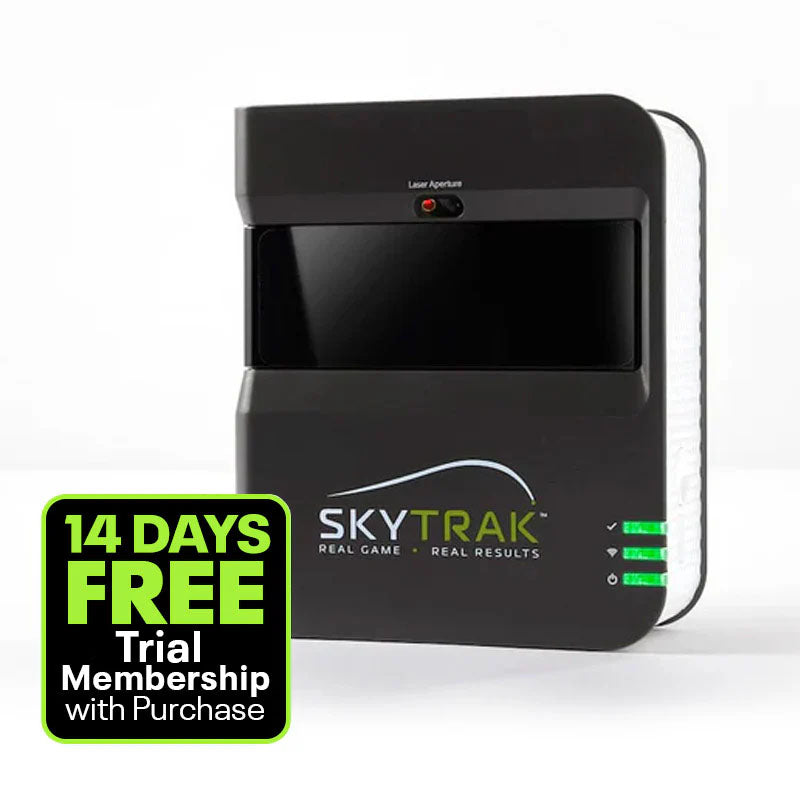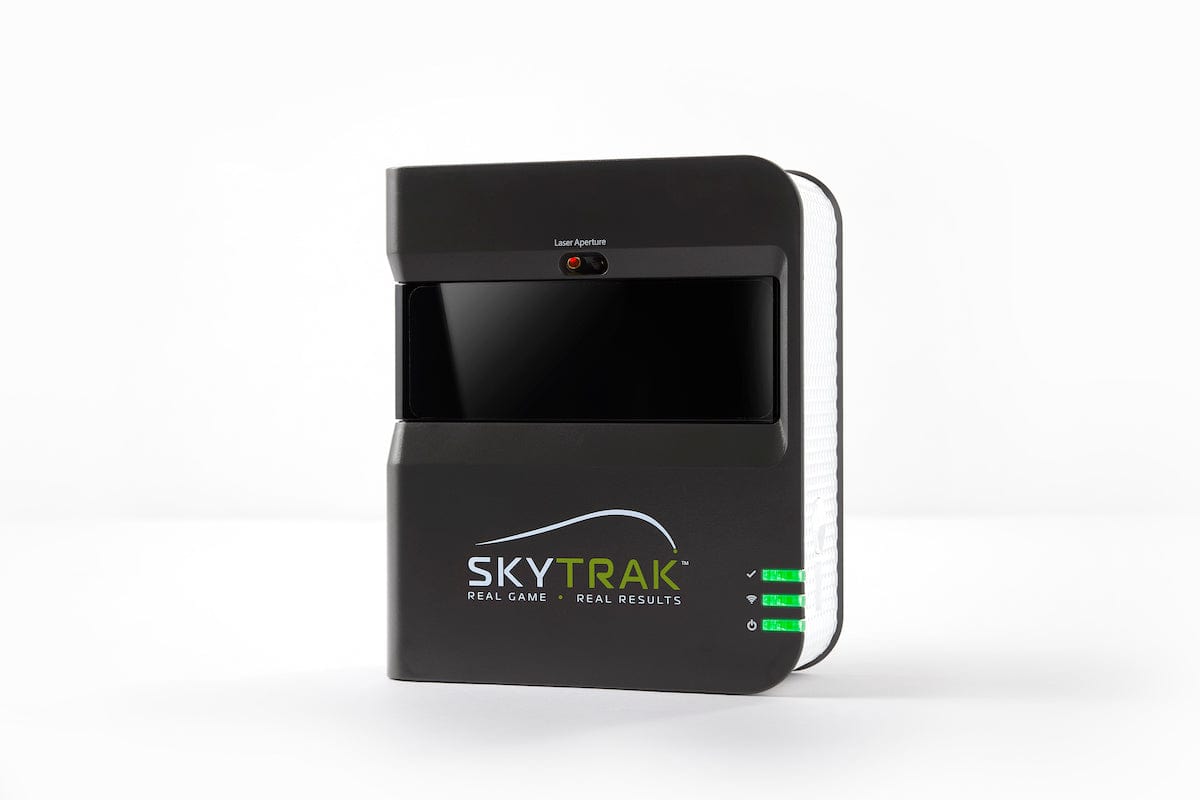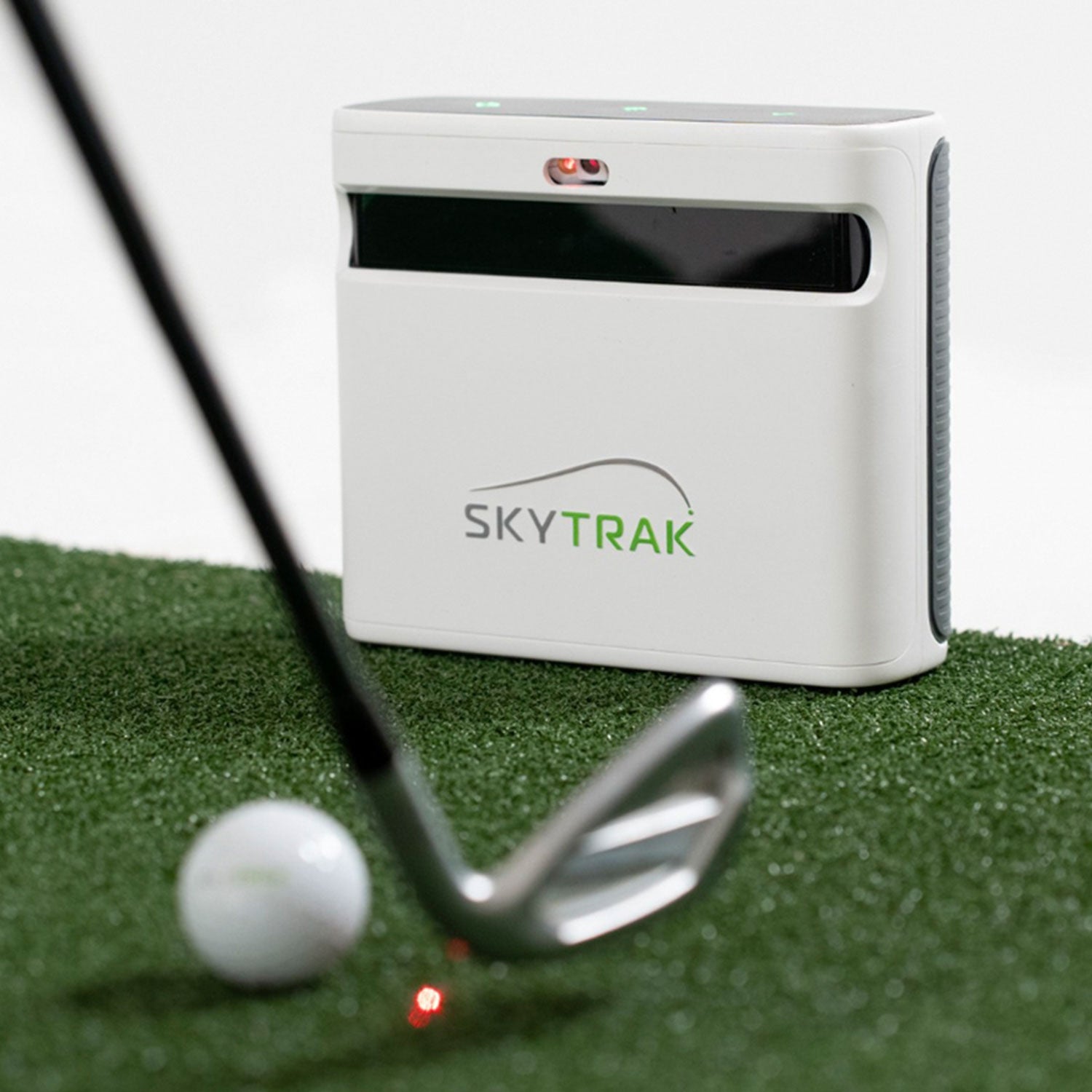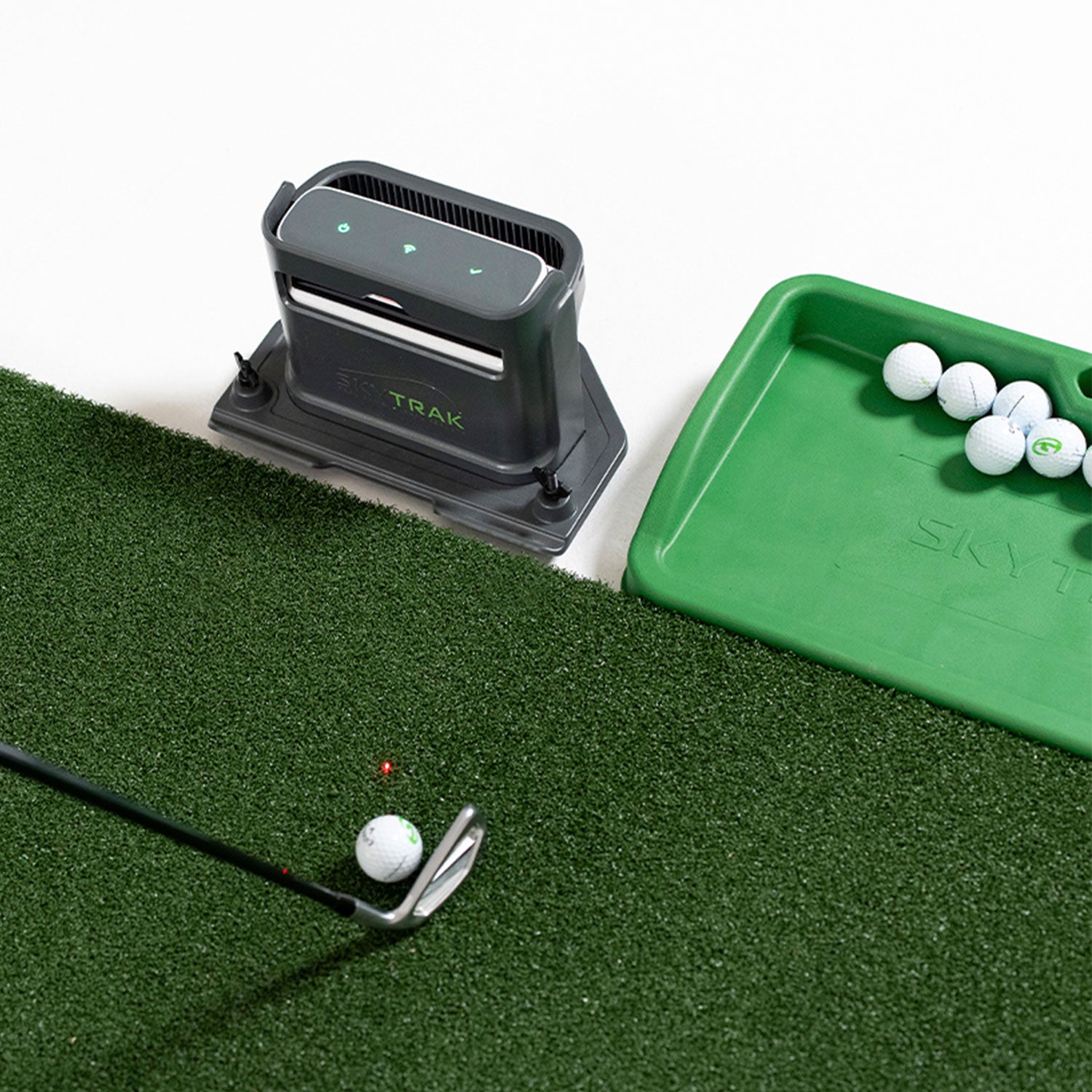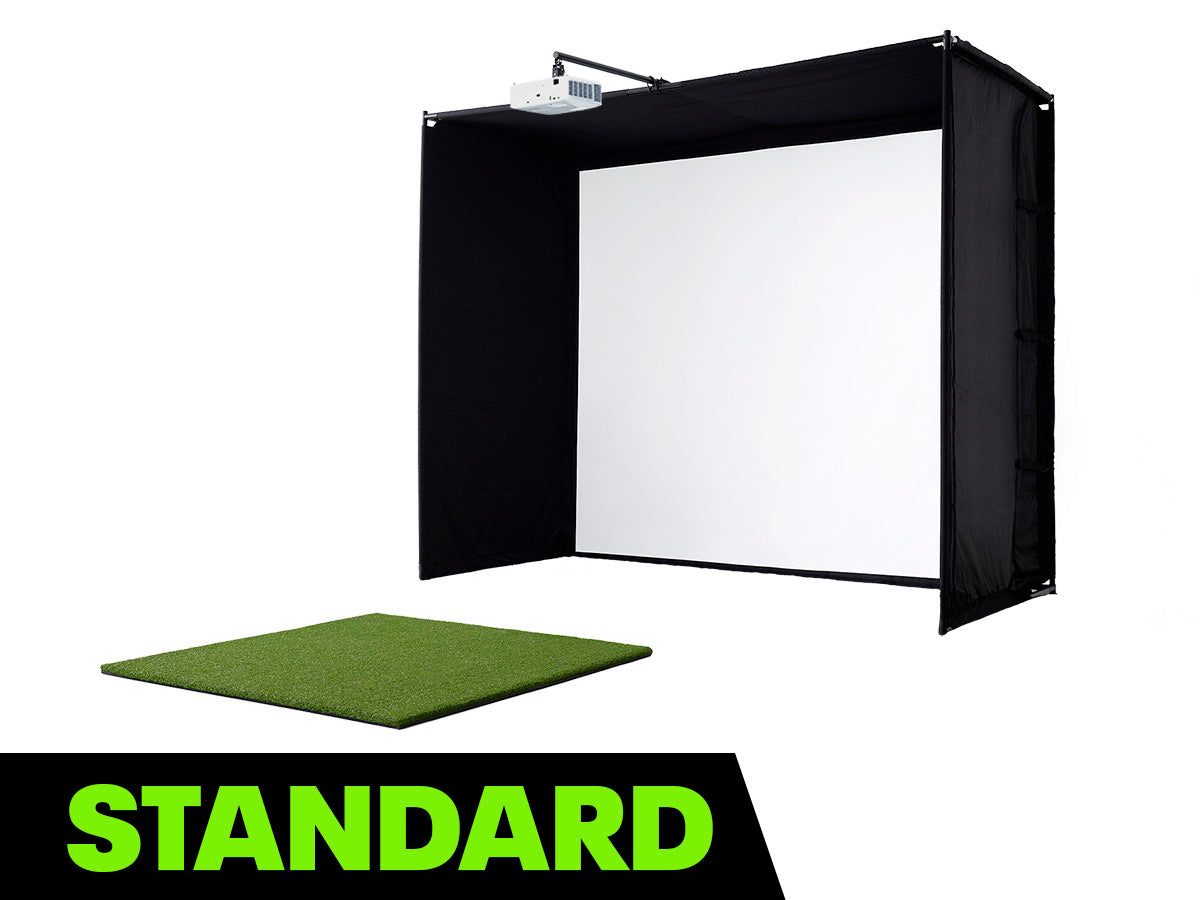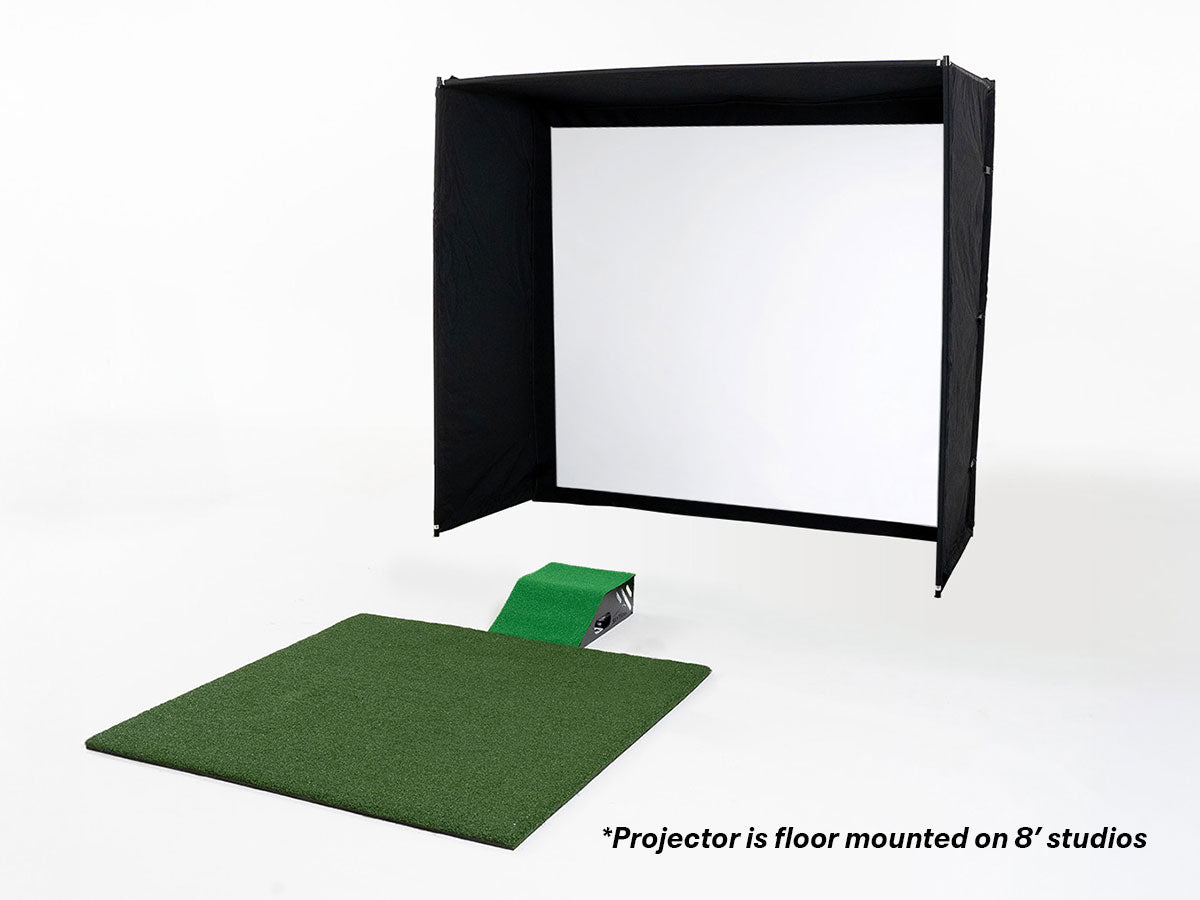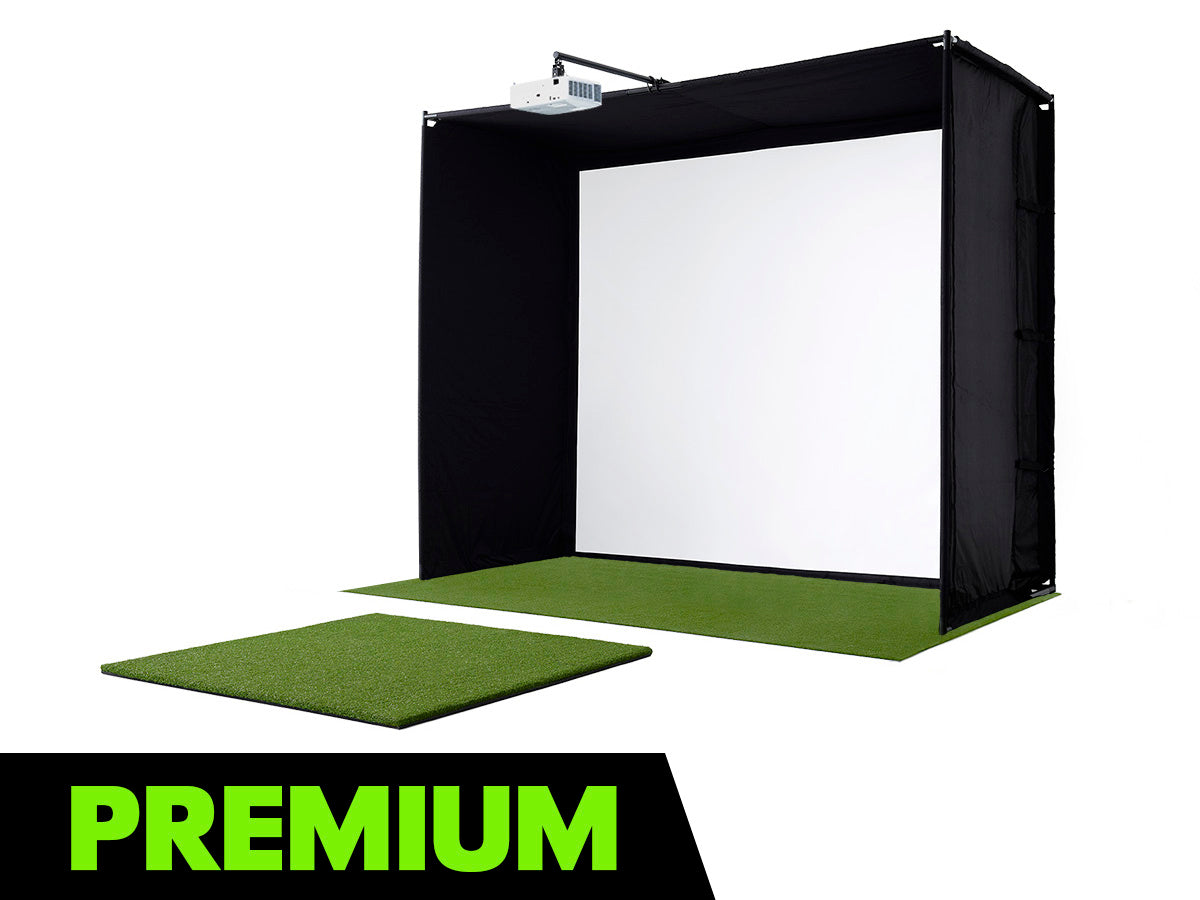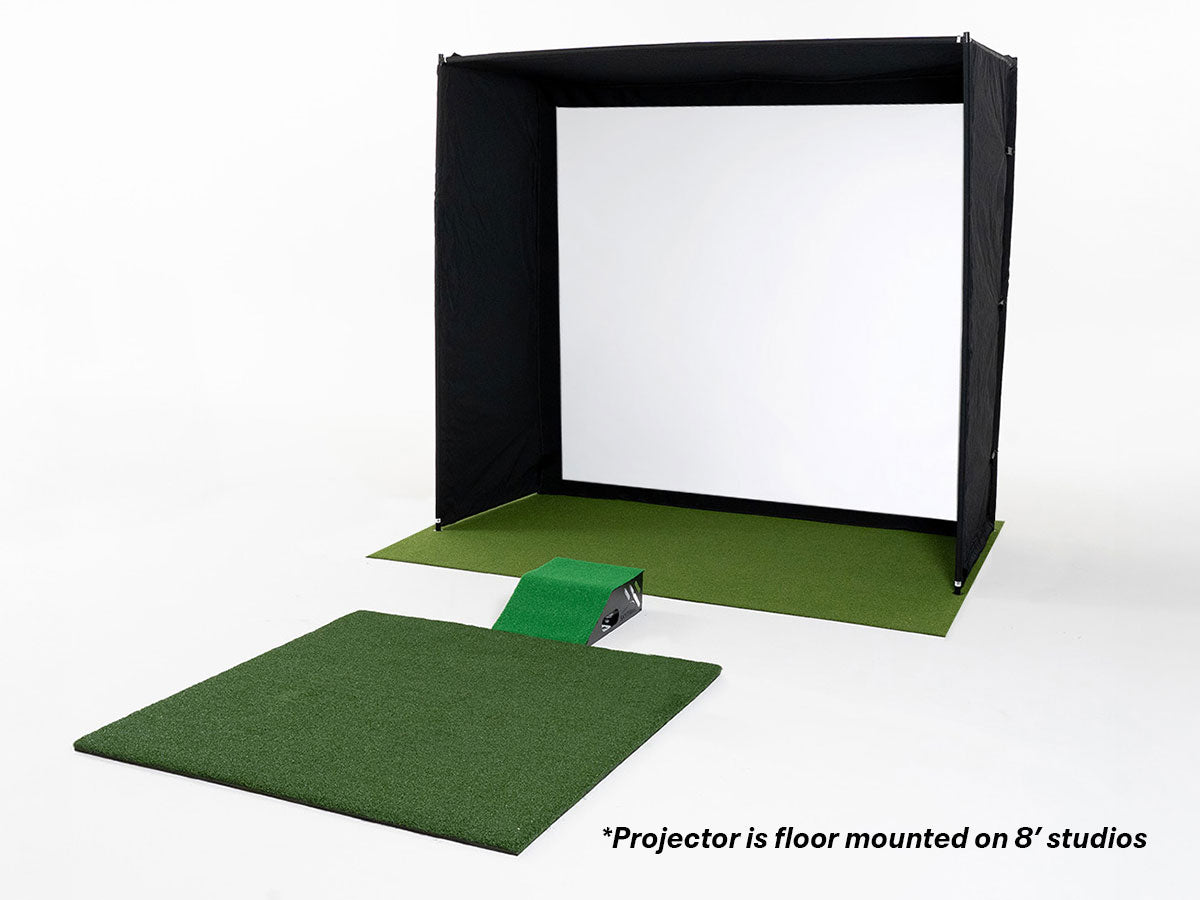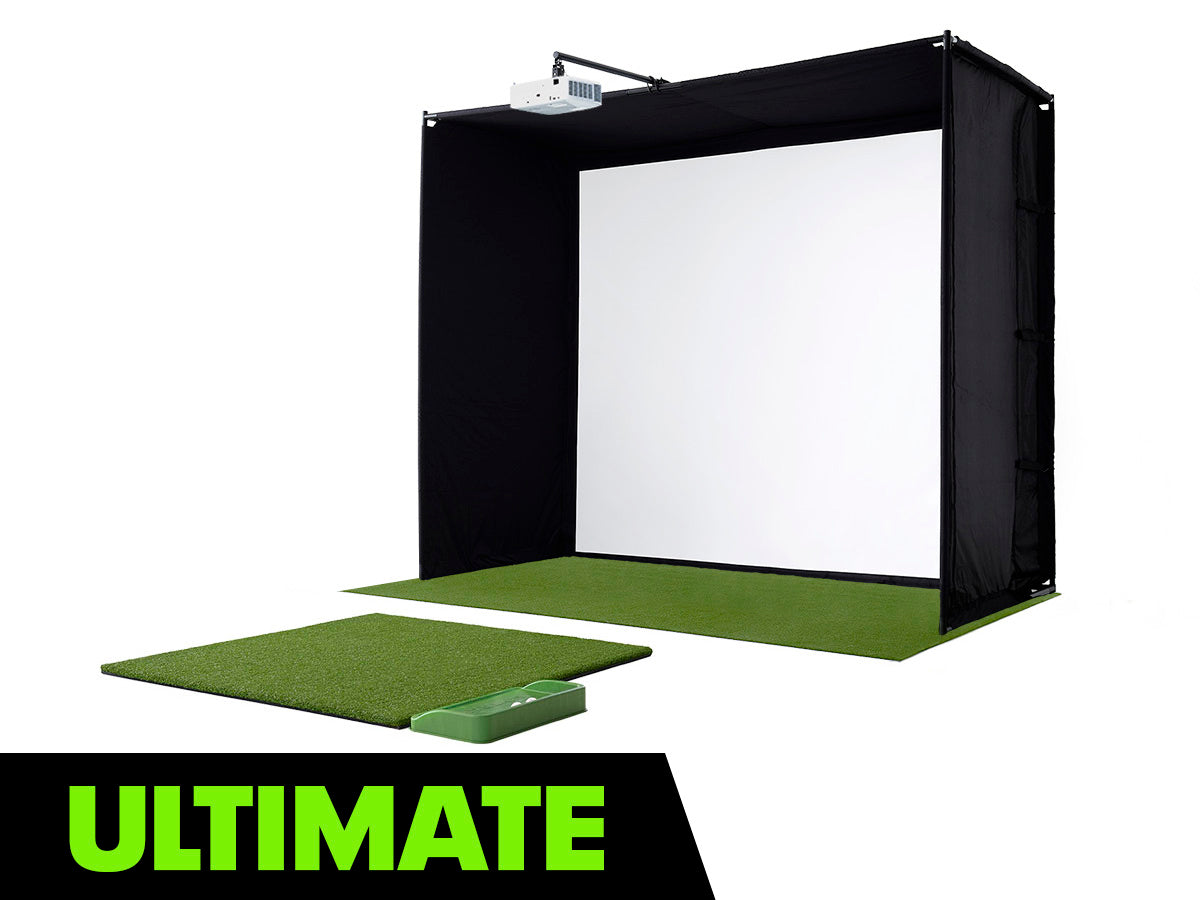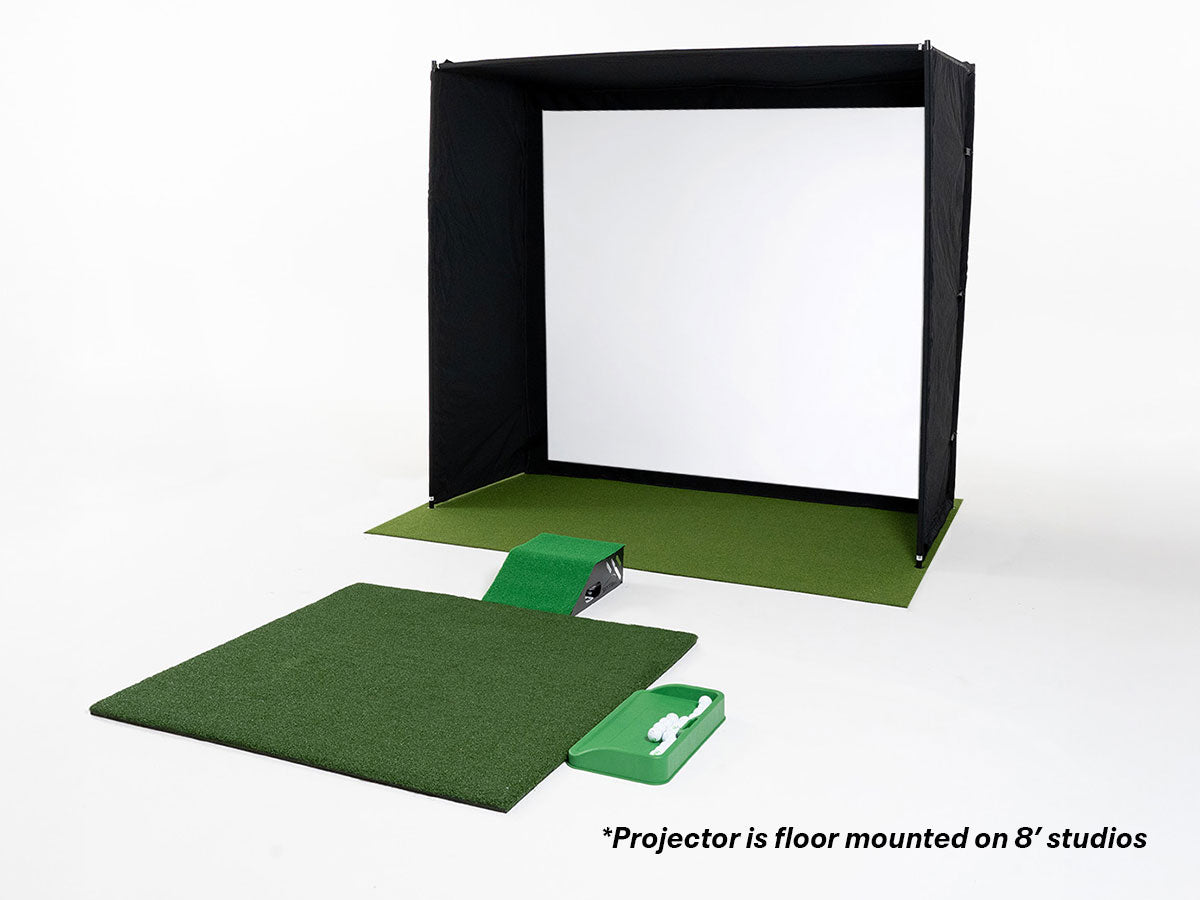
Key Moments
00:00:00 This video offers tips from golf experts Cody and Nick on improving approach shots from 150 yards to hit more greens and lower your scores, with a bonus on hitting from the rough.
00:00:52 Tour players average about 25 feet from 150 yards, with accuracy decreasing as distance increases, so it's important to consider this variability when planning shots, especially on challenging holes like one with water hazards at 150 yards.
00:01:42 When facing a difficult shot surrounded by hazards, it's safer to aim for the middle of the green at about 160 yards and slightly right to avoid water, rather than trying to hit the flag at 150 yards and risking a water hazard.
00:02:26 Focus on hitting a full nine iron shot of 160 yards aimed slightly right and toward the middle of the green to better cover the water and improve your chances of landing near the hole.
00:03:11 Mapping your shot pattern helps identify common miss directions and ideal ball landing spots, which may differ from your actual aim point.
00:03:48 The shot was slightly overcooked and missed left, so if your usual miss is left, you may need to aim further right.
00:04:16 Even if you don't hit every shot perfectly, like missing the pitching wedge distance, reaching dry land still gives you a good chance to chip for par or birdie despite trouble around the green.
00:05:14 Focus on picking a specific target, like the trees behind the hole, to help clear your mind and improve your shot.
00:05:57 A 14-foot putt on one of the hardest holes is a solid result, and while the pitching wedge feels uncertain for this distance, using an eight iron might help get closer to the middle of the green.
00:06:43 When aiming shots, it's important to adjust for potential misses by aiming away from hazards and considering your lie to improve accuracy and scoring.
00:07:36 The golfer chooses an eight iron to safely aim left of the bunker, hoping for a slight fade back to the middle of the green while avoiding the water.
00:08:35 The speaker reflects on a decent but imperfect shot, aiming to avoid water hazards and plans to try again with a more accurate middle shot.
00:09:09 The speaker analyzes golf shots, emphasizing the impact of club choice and conditions on distance, and encourages practice with SKYTRAK to improve performance from 150 yards.
Insights
⛳️ Aiming for the center of the green instead of the flagstick from 150 yards can help avoid hazards and lower scores.
🎯 Most amateurs overestimate their ability to hit the perfect distance, so clubbing up and aiming safer is often smarter.
💧 Factoring in water hazards and aiming away from trouble areas increases your chances of staying dry and scoring better.
🧠 Using background targets like trees can help you focus your aim and mentally block out dangerous areas.
📊 Golf tech tools like heat maps and shot pattern analysis can reveal your tendencies and help you adjust your strategy.
🌱 Shots from the rough require club selection adjustments and realistic expectations about distance loss.
🔄 Even imperfect shots can leave you in a good position if you plan for misses and avoid the worst hazards.
🏌️♂️ Practicing with different clubs and aim points at 150 yards builds confidence and consistency on the course.
Transcript
00:00:00 Hey everyone. If you want to hit more greens from 150 yards, this video is for you. I'm Cody, the director of marketing at SkyRack. I'm here with Nick, the director of teaching quality with GOLFTEC, and we've got some tips for you to help lower those scores. And make sure you stick around to the end for the bonus where we're going to talk about hitting from the rough using live penalties. All right, Nick. So, talk to us about 150, what we can do, what we
00:00:25 can do better, how we can improve. Yeah. So, approach shots in general is just a huge way to help improve your game. So, hitting more greens uh makes this game a whole lot easier. Hitting the ball closer to the hole or just on the green in general helps to lower your scores. And a big problem that we see with a lot of amateurs and a lot of players in the world is they see a shot like this, they have 150 yards out, they want to aim right at the flag stick, and that gets
00:00:50 them into a lot of problems. So, your tour average at 150 yards is about 25 ft. And that starts to go higher and higher and further and further away from the hole as we get to our 80s, 90s, all the way up to 40, 50 feet. So, we got to take that into account that we're not going to hit every shot the way we want to hit it. We're not going to hit every shot right at the hole. So, we got to take that into account when we're actually playing something like this.
00:01:11 So, we have a really cool hole here with some water left and short here. We're 150 yards. What are you thinking? What are you going to do here? Yeah, I mean from 150 that's it's a general like it's not an easy number for me. It's kind feels like it's in between clubs for me. I don't know if that's exactly right or not. If the flag's in that front left, I'm definitely going to try to think about going longer towards the middle, but you know, I always do have a
00:01:38 tendency to want to go at the flag. So, that's why I'm here with you. Help me get out of trouble and think about this the right way. This is obviously a very difficult hole with trouble all around it. Right. I mean, everyone's got a laser rangefinder or some type of GPS and uh I see this all the time. Somebody will just laser this flag and say you got 150. They go to their bag right there and they're just reaching for that 150 club and that's the one they're hitting. The problem is we're not all
00:02:01 hitting these 150 yard shots perfectly. In this case, if we don't hit it perfectly, we have about 7 yards of carry between the water and the flag stick here. That's a lot of water balls. So, how can we start to eliminate those big numbers? We got to be picking something a little bit closer to 160 yards, which is going to put us in the middle of this green. And then we're actually going to want to aim a little bit more to the right, which is going to take some of that water left out of the
00:02:23 play. And even if we do miss a little right of that green, we're still in a better position to get up and down versus having to hit a third shot from the drop zone. That nine iron sounds like it might be the right club for you. But I don't want you to sit here and try to hit this 150. I really want you to try to hit this 160 yards. Get a full nine iron in there. Make sure we are covering all the all the water. Even if we don't hit the ball perfectly, might still be in really good shape. Might
00:02:45 actually be right next to the hole. Awesome. Well, let's get into it. Let's do it. So now we have that 150 yard shot, but we're going to aim you more towards the middle of the green. Yeah. And a little to the right. So that's what we've done on the software. So we have 160 yards is really what we're trying to hit this shot and then out to the right. So we've moved the target deeper into the green and further to the right. So the cool thing about the software as
00:03:08 well is you're going to have the heat map on the right hand side on that mini map. That's going to help you understand what your shot pattern is. So, if you tend to miss a little right and short or tend to miss a little left and long, those are okay. That's good to know. This is really where you want the ball to end up. This isn't necessarily your aim point. This is where uh we're just trying to get the ball to to end up. Perfect. Yeah. I mean, that water on the
00:03:29 left and short definitely has my eye. Not too worried about that bunker that is short, right? Uh but yeah, let's see what we've got here.
00:03:48 Sounded all right. Just overcooked it. Just overcooked it. Obviously, sometimes golf is hard. You're going to do uh you hit the 161. So, you hit you hit the number. So, the numbers there. We just missed left. And uh again, for those out there, if that is your traditional miss, you might have to might have to move that target further to the right. If your traditional misses to the right, then it should be okay.
00:04:16 Sounded pretty good. Did it make it? There's a perfect example of why you wouldn't want to hit your pitching wedge here, right? You might not have hit that as crisp as you wanted to, but you still made it to dry land. You still have your a chance here to get up and down for par. Maybe even chip in for birdie. Sure. So that's that's the big thing is we're not always going to hit the every shot perfectly. We're not going to hit that 150 yard club 150 yards every
00:04:43 single time. Typically it's going to be lower or less than that. So even though we were aiming for 160, which your last shot was 160, you didn't quite hit that one as crisp, but now we're only I don't know that was like 10 yards from the hole. Yeah. So you got a relatively straightforward chip and you're dry, which is the most important part. Let me ask you this. Like with trouble all around the green, left, short, and even long. Yeah. And you've got trouble short, right? Is there a way that I
00:05:10 should be picking a club and then looking at the hole and and swinging? Like is there a tip or something that can help me just get rid of that trouble in my mind and try to hit a good shot? Yeah, I think the biggest thing right there is just pick a target out. Right. So, we have some trees in the background here. Uh maybe they're a little further right than uh maybe you need to aim, but those would be a really good uh place to start aiming. Yeah. So, you're looking
00:05:37 at those trees to the right of my start line, right of the pin, right in the back. Yeah. That I mean, those would be reasonable ways to help eliminate more of that water on the left. I'm going to put that in my mind and see how this works.
00:05:57 There we go. Again, didn't quite go your 160, but now you have a 14footer. That seems pretty pretty reasonable there for this hole. If I had a 14 footer, I'd be walking away pretty happy with that. I mean, this is one of the hardest holes on the tour. Yeah. And I think with the pitching wedge, that's going to be a club that I'm really not comfortable with with that distance. And then the eight iron, you know, I feel like we can even try that if we want of getting it closer to the middle of the
00:06:27 green. Sure. All right. So, I've got my eight iron here. And I'm just thinking about those trees back. Right. Just like that last
00:06:43 one. Oh, fade in there. Get down. All right. So, again, we're we're taking into account that, you know, potentially you could miss left. So, we're adding in some of that leftward miss by aiming further to the right, keeping that out. Uh may not be exactly what you wanted it to be, but again, we're dry, so we're we're just giving a bigger chance of landing it on the green or close to the green on the good side, which is not the water side in this case, to help you
00:07:12 lower scores, hit more greens, or just be closer to the green in general. Okay, so you did a really good job on the other one from the fairway of adjusting your aim and adjusting your club a little bit. Now, let's try this out of the rough. So, couple things to take into account here is going to be your lie. So, we've turned on the live penalty on our software. Obviously, when you're out in the golf course, you need to determine the lie, if it's good, bad. That might also influence what club
00:07:36 you're going to use here. Sure. So, what are you going to use here? You got the same distance. We're 150 yards again. Still have the water. Now the water's on the right as well, but still water's short. You still hitting that 9 iron? Well, I think coming out of the rough, no, I want to I definitely want to be safe and hit the eight iron. I think that that's uh it's also my favorite club in the bag. So, I feel really good about this and I know that I don't have
00:07:59 trouble too far long here. Right. So, are you still aiming right at the flag here? No, I'm definitely going more to the left. I'm going to take a line right over the left side of that bunker. really play it on the safe side and uh try to hit a little fade um back to the middle of the green and uh yeah, we'll see how it goes. All right, so I've got my eight iron. Definitely not thinking about the water. Just thinking of the left edge of that bunker. Hoping it fades back just a little bit.
00:08:28 Even if it doesn't, we're in good shape. Nice easy swing.
00:08:35 Sounded like pretty good contact. Oh my gosh. Little left. Clearly, that's not the shot we'd want uh there. But again, you minimize some of the some of the problems here, some of the high scores by hitting not into the water. I think I was thinking about that water on the right. That might have been the problem there. We're going to give this one more go. Try to try to hit a normal shot right in the middle of that grain is where we have you aim.
00:09:09 There you go. Started pretty straight on your line. Yeah. And that's going to be a pretty good shot. Look at that. Getting better and better. There you go. You might not have hit that one as good. That only carried 141 yards. So, even with that eight iron, uh, and being in the rough, we definitely see how that's going to influence how far that ball's going to fly. Yeah. Nine iron would have been either in the bunker or maybe even in the water. Yeah. Which would both are
00:09:34 bad. Now you have a really nice shot on this one for a good chance for maybe a birdie here. It's always what we're looking for. Love it. All right. Big thanks to Nick. Clearly I've got a little bit of work to do from 150. But if you want to get better at 150, hit more greens, lower those scores. Make sure you get a SKYTRAK. If you've got one already, hit course play practice up or one of the improvement ranges. Make sure you hit the subscribe button and let us know in the comments what club
00:10:01 you're hitting from 150. We'll see you next time. [Music]
00:00:00 This video offers tips from golf experts Cody and Nick on improving approach shots from 150 yards to hit more greens and lower your scores, with a bonus on hitting from the rough.
00:00:52 Tour players average about 25 feet from 150 yards, with accuracy decreasing as distance increases, so it's important to consider this variability when planning shots, especially on challenging holes like one with water hazards at 150 yards.
00:01:42 When facing a difficult shot surrounded by hazards, it's safer to aim for the middle of the green at about 160 yards and slightly right to avoid water, rather than trying to hit the flag at 150 yards and risking a water hazard.
00:02:26 Focus on hitting a full nine iron shot of 160 yards aimed slightly right and toward the middle of the green to better cover the water and improve your chances of landing near the hole.
00:03:11 Mapping your shot pattern helps identify common miss directions and ideal ball landing spots, which may differ from your actual aim point.
00:03:48 The shot was slightly overcooked and missed left, so if your usual miss is left, you may need to aim further right.
00:04:16 Even if you don't hit every shot perfectly, like missing the pitching wedge distance, reaching dry land still gives you a good chance to chip for par or birdie despite trouble around the green.
00:05:14 Focus on picking a specific target, like the trees behind the hole, to help clear your mind and improve your shot.
00:05:57 A 14-foot putt on one of the hardest holes is a solid result, and while the pitching wedge feels uncertain for this distance, using an eight iron might help get closer to the middle of the green.
00:06:43 When aiming shots, it's important to adjust for potential misses by aiming away from hazards and considering your lie to improve accuracy and scoring.
00:07:36 The golfer chooses an eight iron to safely aim left of the bunker, hoping for a slight fade back to the middle of the green while avoiding the water.
00:08:35 The speaker reflects on a decent but imperfect shot, aiming to avoid water hazards and plans to try again with a more accurate middle shot.
00:09:09 The speaker analyzes golf shots, emphasizing the impact of club choice and conditions on distance, and encourages practice with SKYTRAK to improve performance from 150 yards.
⛳️ Aiming for the center of the green instead of the flagstick from 150 yards can help avoid hazards and lower scores.
🎯 Most amateurs overestimate their ability to hit the perfect distance, so clubbing up and aiming safer is often smarter.
💧 Factoring in water hazards and aiming away from trouble areas increases your chances of staying dry and scoring better.
🧠 Using background targets like trees can help you focus your aim and mentally block out dangerous areas.
📊 Golf tech tools like heat maps and shot pattern analysis can reveal your tendencies and help you adjust your strategy.
🌱 Shots from the rough require club selection adjustments and realistic expectations about distance loss.
🔄 Even imperfect shots can leave you in a good position if you plan for misses and avoid the worst hazards.
🏌️♂️ Practicing with different clubs and aim points at 150 yards builds confidence and consistency on the course.
00:00:00 Hey everyone. If you want to hit more greens from 150 yards, this video is for you. I'm Cody, the director of marketing at SkyRack. I'm here with Nick, the director of teaching quality with GOLFTEC, and we've got some tips for you to help lower those scores. And make sure you stick around to the end for the bonus where we're going to talk about hitting from the rough using live penalties. All right, Nick. So, talk to us about 150, what we can do, what we
00:00:25 can do better, how we can improve. Yeah. So, approach shots in general is just a huge way to help improve your game. So, hitting more greens uh makes this game a whole lot easier. Hitting the ball closer to the hole or just on the green in general helps to lower your scores. And a big problem that we see with a lot of amateurs and a lot of players in the world is they see a shot like this, they have 150 yards out, they want to aim right at the flag stick, and that gets
00:00:50 them into a lot of problems. So, your tour average at 150 yards is about 25 ft. And that starts to go higher and higher and further and further away from the hole as we get to our 80s, 90s, all the way up to 40, 50 feet. So, we got to take that into account that we're not going to hit every shot the way we want to hit it. We're not going to hit every shot right at the hole. So, we got to take that into account when we're actually playing something like this.
00:01:11 So, we have a really cool hole here with some water left and short here. We're 150 yards. What are you thinking? What are you going to do here? Yeah, I mean from 150 that's it's a general like it's not an easy number for me. It's kind feels like it's in between clubs for me. I don't know if that's exactly right or not. If the flag's in that front left, I'm definitely going to try to think about going longer towards the middle, but you know, I always do have a
00:01:38 tendency to want to go at the flag. So, that's why I'm here with you. Help me get out of trouble and think about this the right way. This is obviously a very difficult hole with trouble all around it. Right. I mean, everyone's got a laser rangefinder or some type of GPS and uh I see this all the time. Somebody will just laser this flag and say you got 150. They go to their bag right there and they're just reaching for that 150 club and that's the one they're hitting. The problem is we're not all
00:02:01 hitting these 150 yard shots perfectly. In this case, if we don't hit it perfectly, we have about 7 yards of carry between the water and the flag stick here. That's a lot of water balls. So, how can we start to eliminate those big numbers? We got to be picking something a little bit closer to 160 yards, which is going to put us in the middle of this green. And then we're actually going to want to aim a little bit more to the right, which is going to take some of that water left out of the
00:02:23 play. And even if we do miss a little right of that green, we're still in a better position to get up and down versus having to hit a third shot from the drop zone. That nine iron sounds like it might be the right club for you. But I don't want you to sit here and try to hit this 150. I really want you to try to hit this 160 yards. Get a full nine iron in there. Make sure we are covering all the all the water. Even if we don't hit the ball perfectly, might still be in really good shape. Might
00:02:45 actually be right next to the hole. Awesome. Well, let's get into it. Let's do it. So now we have that 150 yard shot, but we're going to aim you more towards the middle of the green. Yeah. And a little to the right. So that's what we've done on the software. So we have 160 yards is really what we're trying to hit this shot and then out to the right. So we've moved the target deeper into the green and further to the right. So the cool thing about the software as
00:03:08 well is you're going to have the heat map on the right hand side on that mini map. That's going to help you understand what your shot pattern is. So, if you tend to miss a little right and short or tend to miss a little left and long, those are okay. That's good to know. This is really where you want the ball to end up. This isn't necessarily your aim point. This is where uh we're just trying to get the ball to to end up. Perfect. Yeah. I mean, that water on the
00:03:29 left and short definitely has my eye. Not too worried about that bunker that is short, right? Uh but yeah, let's see what we've got here.
00:03:48 Sounded all right. Just overcooked it. Just overcooked it. Obviously, sometimes golf is hard. You're going to do uh you hit the 161. So, you hit you hit the number. So, the numbers there. We just missed left. And uh again, for those out there, if that is your traditional miss, you might have to might have to move that target further to the right. If your traditional misses to the right, then it should be okay.
00:04:16 Sounded pretty good. Did it make it? There's a perfect example of why you wouldn't want to hit your pitching wedge here, right? You might not have hit that as crisp as you wanted to, but you still made it to dry land. You still have your a chance here to get up and down for par. Maybe even chip in for birdie. Sure. So that's that's the big thing is we're not always going to hit the every shot perfectly. We're not going to hit that 150 yard club 150 yards every
00:04:43 single time. Typically it's going to be lower or less than that. So even though we were aiming for 160, which your last shot was 160, you didn't quite hit that one as crisp, but now we're only I don't know that was like 10 yards from the hole. Yeah. So you got a relatively straightforward chip and you're dry, which is the most important part. Let me ask you this. Like with trouble all around the green, left, short, and even long. Yeah. And you've got trouble short, right? Is there a way that I
00:05:10 should be picking a club and then looking at the hole and and swinging? Like is there a tip or something that can help me just get rid of that trouble in my mind and try to hit a good shot? Yeah, I think the biggest thing right there is just pick a target out. Right. So, we have some trees in the background here. Uh maybe they're a little further right than uh maybe you need to aim, but those would be a really good uh place to start aiming. Yeah. So, you're looking
00:05:37 at those trees to the right of my start line, right of the pin, right in the back. Yeah. That I mean, those would be reasonable ways to help eliminate more of that water on the left. I'm going to put that in my mind and see how this works.
00:05:57 There we go. Again, didn't quite go your 160, but now you have a 14footer. That seems pretty pretty reasonable there for this hole. If I had a 14 footer, I'd be walking away pretty happy with that. I mean, this is one of the hardest holes on the tour. Yeah. And I think with the pitching wedge, that's going to be a club that I'm really not comfortable with with that distance. And then the eight iron, you know, I feel like we can even try that if we want of getting it closer to the middle of the
00:06:27 green. Sure. All right. So, I've got my eight iron here. And I'm just thinking about those trees back. Right. Just like that last
00:06:43 one. Oh, fade in there. Get down. All right. So, again, we're we're taking into account that, you know, potentially you could miss left. So, we're adding in some of that leftward miss by aiming further to the right, keeping that out. Uh may not be exactly what you wanted it to be, but again, we're dry, so we're we're just giving a bigger chance of landing it on the green or close to the green on the good side, which is not the water side in this case, to help you
00:07:12 lower scores, hit more greens, or just be closer to the green in general. Okay, so you did a really good job on the other one from the fairway of adjusting your aim and adjusting your club a little bit. Now, let's try this out of the rough. So, couple things to take into account here is going to be your lie. So, we've turned on the live penalty on our software. Obviously, when you're out in the golf course, you need to determine the lie, if it's good, bad. That might also influence what club
00:07:36 you're going to use here. Sure. So, what are you going to use here? You got the same distance. We're 150 yards again. Still have the water. Now the water's on the right as well, but still water's short. You still hitting that 9 iron? Well, I think coming out of the rough, no, I want to I definitely want to be safe and hit the eight iron. I think that that's uh it's also my favorite club in the bag. So, I feel really good about this and I know that I don't have
00:07:59 trouble too far long here. Right. So, are you still aiming right at the flag here? No, I'm definitely going more to the left. I'm going to take a line right over the left side of that bunker. really play it on the safe side and uh try to hit a little fade um back to the middle of the green and uh yeah, we'll see how it goes. All right, so I've got my eight iron. Definitely not thinking about the water. Just thinking of the left edge of that bunker. Hoping it fades back just a little bit.
00:08:28 Even if it doesn't, we're in good shape. Nice easy swing.
00:08:35 Sounded like pretty good contact. Oh my gosh. Little left. Clearly, that's not the shot we'd want uh there. But again, you minimize some of the some of the problems here, some of the high scores by hitting not into the water. I think I was thinking about that water on the right. That might have been the problem there. We're going to give this one more go. Try to try to hit a normal shot right in the middle of that grain is where we have you aim.
00:09:09 There you go. Started pretty straight on your line. Yeah. And that's going to be a pretty good shot. Look at that. Getting better and better. There you go. You might not have hit that one as good. That only carried 141 yards. So, even with that eight iron, uh, and being in the rough, we definitely see how that's going to influence how far that ball's going to fly. Yeah. Nine iron would have been either in the bunker or maybe even in the water. Yeah. Which would both are
00:09:34 bad. Now you have a really nice shot on this one for a good chance for maybe a birdie here. It's always what we're looking for. Love it. All right. Big thanks to Nick. Clearly I've got a little bit of work to do from 150. But if you want to get better at 150, hit more greens, lower those scores. Make sure you get a SKYTRAK. If you've got one already, hit course play practice up or one of the improvement ranges. Make sure you hit the subscribe button and let us know in the comments what club
00:10:01 you're hitting from 150. We'll see you next time. [Music]



